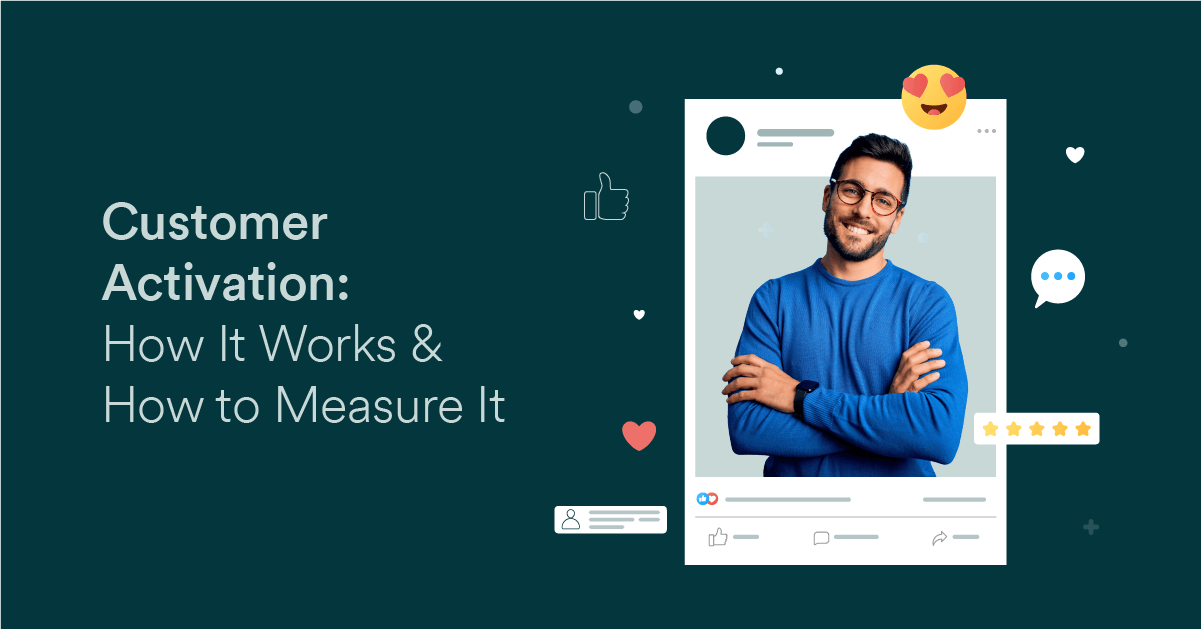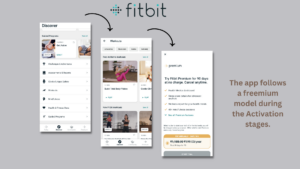Customer Activation: How It Works & How to Measure It
Activation can be explained as the stage where the curious visitor converts into an active customer of your product/service app. An activated customer can bring great value to your business. They could become loyal customers, bring in more customers with them over time, and also bring in higher revenues.

Activation can be explained as the stage where the curious visitor converts into an active customer of your product/service app. At this stage, the customer is clear that they want to use your product and takes that first step towards using your product, and is ready to derive value from your product for the first time.
This stage marks the beginning of what could be a long-term relationship between you as a product/service app owner and the customer. It is a significant win because it means that you have managed to convince your customer of the value your product brings. The end goal should be to capture the customer’s attention and wallet-share for the long term and increase the customer’s lifetime value.
An activated customer can bring great value to your business. They could become loyal customers, bring in more customers with them over time, and also bring in higher revenues.
Activation Stage Differs based on Product / Service
This stage is when the customer makes that very important first purchase, buys that first subscription, or avails of that first service. So, activation could mean different things depending on the product or service you provide.
For instance, a ride-hailing company or online travel booking company would consider booking that first cab or hotel room as activation, while for OTT platforms and media companies, it would be buying a subscription. For audiobook/music/video streaming platforms, it could be downloading that first book or song or watching that first movie post subscription, as that is when the customer derives value from the product. For E-commerce or B2C companies, it is the purchase of that first item that signifies activation.
The activation stage is very critical because this first experience of the customer can dictate whether or not they will want to be your repeat customers.
Imagine if the product is delivered on time or well-before time, wrapped beautifully using recycled products with a personalized message that explains the product’s origins. Wouldn’t that be a wonderful first experience that the customer is unlikely to forget anytime soon?
Seamless Onboarding Leads to Successful Activation
In the article on Customer Onboarding, we talked about the importance of onboarding customers in a frictionless and efficient way so that they are easily converted into regular, paying customers.
A seamless onboarding experience followed by a successful activation process should be seen as the foundation for a long-term relationship between the customer and the product or brand.
As an example, let’s look at Fitbit, the health and fitness tracker app.

Fitbit follows a freemium model approach. During the onboarding stage, the app provides with a few free features such as access to short exercise videos.
But on activating the ‘Premium’ membership, the app opens up an entire suite of services and offerings. This includes workout videos, meditation videos, meal logs, water-intake logs, and even healthy recipes. It even helps create a ‘Wellness Report’ that tracks health trends over a 30-day period. This report, the app claims, is credible and reliable enough for you to have a conversation with your doctor about it.
The app acts as a one-stop shop for all things health. Tangible measures such as steps taken, heart rate, calories consumed, water intake, etc provide a real-time understanding of customer habits. It helps them make healthier decisions. This is a big draw for customers – the reliability and ease of access to such information.
Moreover, the app interface and the content are smooth and easy to follow. The app offers challenges and adventures which adds a competitive element to the overall experience.
A customer might gladly pay for the lower-priced premium service, given that the tracker device itself is priced much higher.
Tracking the ‘Aha’ Moment: Customer Activation Metrics
-
Activation Rate: (No. of active customers / No. of visitors)*100
This is the rate at which your curious visitors become active customers of the product/service. This is a critical indicator of how good your onboarding process has been. A lower activation rate might be an indication that the onboarding experience of your customers could be better. Making changes to the existing onboarding process by identifying the pain points of customers could help in boosting this number.
But if you are experiencing a growing activation rate, that means that you are on the right track. This is a good indicator that you have been able to provide a good onboarding experience to your customers. It means that you have been successful in convincing potential customers of your product’s value proposition. This is why they are willing to take the right action, whatever it is, that signifies activation.
The activation rate, however, will not be able to tell you the reason behind such conversion or non-conversion.
-
Sign-up to Subscription Rate: (No. of subscribers / No. of sign-ups)*100
This tells you how many customers agree to a subscription after the initial onboarding process. A higher rate here means that the customers were able to derive value from your product during the trial period.
For instance, music apps such as Spotify, YT Music play ads during the trial period while allowing you full access to their music library. This access convinces customers to move from sign-ups to subscriptions.
This rate, again, is only a representation of the quality of the onboarding experience. To know how to get customers to subscribe, understand customer data and get to the root of the problem.
-
Rate of Sign-ups: (No. of sign-ups/ No. of visitors)*100
This indicates how many people have liked the app or website and are now interested in receiving content updates and announcements from you.
This means that you are able to showcase the value of your product well. For instance, a well-designed website or app could help media publications convert visitors into subscribers. A higher sign-up rate is a reflection of good content.
Revisit Metrics Regularly
There might be other metrics that businesses may be employing to track the level of activation and the reasons behind it. Irrespective of the metric used, the key is to keep revisiting the metric to check its progress.
The advantages of regular check-ins with these metrics include the following:
- It helps you keep track of what is working for the customers and what isn’t.
- You can make timely interventions and changes to products, features, or in-app experiences so that you don’t lose customers.
- It keeps you ahead of the competition as you are able to identify customer pain points and resolve them in a timely manner.
- It gives you deeper insights into changing customer behavior and market trends.